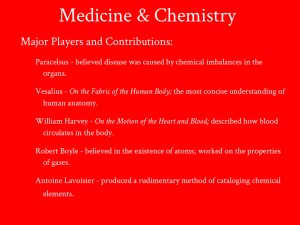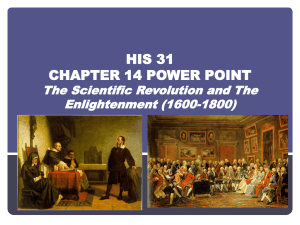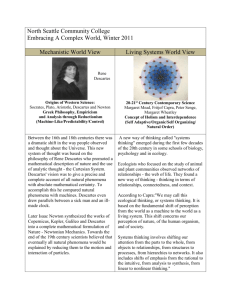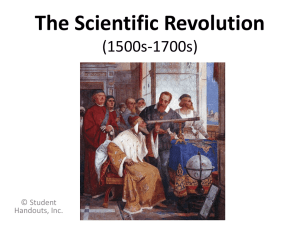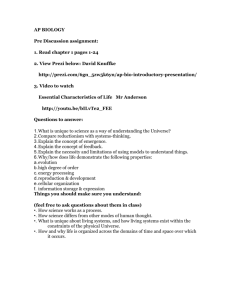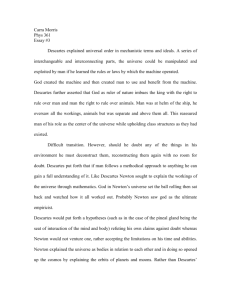Chapter 16 Study Guide
advertisement
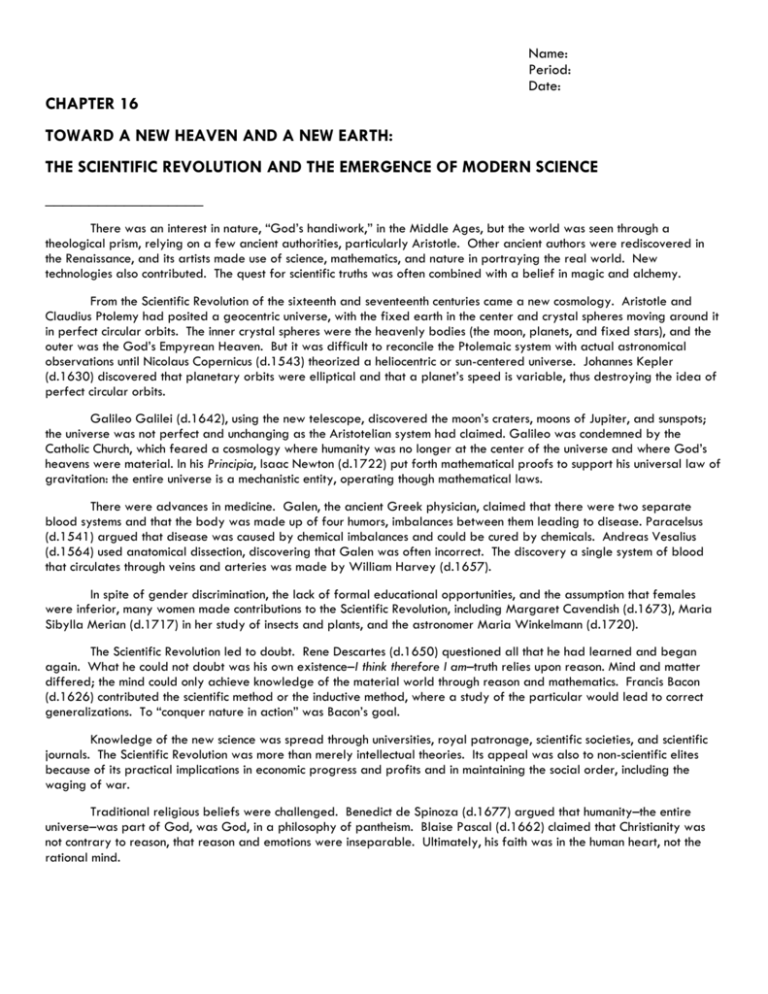
Name: Period: Date: CHAPTER 16 TOWARD A NEW HEAVEN AND A NEW EARTH: THE SCIENTIFIC REVOLUTION AND THE EMERGENCE OF MODERN SCIENCE __________________ There was an interest in nature, “God’s handiwork,” in the Middle Ages, but the world was seen through a theological prism, relying on a few ancient authorities, particularly Aristotle. Other ancient authors were rediscovered in the Renaissance, and its artists made use of science, mathematics, and nature in portraying the real world. New technologies also contributed. The quest for scientific truths was often combined with a belief in magic and alchemy. From the Scientific Revolution of the sixteenth and seventeenth centuries came a new cosmology. Aristotle and Claudius Ptolemy had posited a geocentric universe, with the fixed earth in the center and crystal spheres moving around it in perfect circular orbits. The inner crystal spheres were the heavenly bodies (the moon, planets, and fixed stars), and the outer was the God’s Empyrean Heaven. But it was difficult to reconcile the Ptolemaic system with actual astronomical observations until Nicolaus Copernicus (d.1543) theorized a heliocentric or sun-centered universe. Johannes Kepler (d.1630) discovered that planetary orbits were elliptical and that a planet’s speed is variable, thus destroying the idea of perfect circular orbits. Galileo Galilei (d.1642), using the new telescope, discovered the moon’s craters, moons of Jupiter, and sunspots; the universe was not perfect and unchanging as the Aristotelian system had claimed. Galileo was condemned by the Catholic Church, which feared a cosmology where humanity was no longer at the center of the universe and where God’s heavens were material. In his Principia, Isaac Newton (d.1722) put forth mathematical proofs to support his universal law of gravitation: the entire universe is a mechanistic entity, operating though mathematical laws. There were advances in medicine. Galen, the ancient Greek physician, claimed that there were two separate blood systems and that the body was made up of four humors, imbalances between them leading to disease. Paracelsus (d.1541) argued that disease was caused by chemical imbalances and could be cured by chemicals. Andreas Vesalius (d.1564) used anatomical dissection, discovering that Galen was often incorrect. The discovery a single system of blood that circulates through veins and arteries was made by William Harvey (d.1657). In spite of gender discrimination, the lack of formal educational opportunities, and the assumption that females were inferior, many women made contributions to the Scientific Revolution, including Margaret Cavendish (d.1673), Maria Sibylla Merian (d.1717) in her study of insects and plants, and the astronomer Maria Winkelmann (d.1720). The Scientific Revolution led to doubt. Rene Descartes (d.1650) questioned all that he had learned and began again. What he could not doubt was his own existence–I think therefore I am–truth relies upon reason. Mind and matter differed; the mind could only achieve knowledge of the material world through reason and mathematics. Francis Bacon (d.1626) contributed the scientific method or the inductive method, where a study of the particular would lead to correct generalizations. To “conquer nature in action” was Bacon’s goal. Knowledge of the new science was spread through universities, royal patronage, scientific societies, and scientific journals. The Scientific Revolution was more than merely intellectual theories. Its appeal was also to non-scientific elites because of its practical implications in economic progress and profits and in maintaining the social order, including the waging of war. Traditional religious beliefs were challenged. Benedict de Spinoza (d.1677) argued that humanity–the entire universe–was part of God, was God, in a philosophy of pantheism. Blaise Pascal (d.1662) claimed that Christianity was not contrary to reason, that reason and emotions were inseparable. Ultimately, his faith was in the human heart, not the rational mind. Identifications: 1. “God’s handiwork” 26. Andreas Vesalius 2. “natural philosophers” 27. On the Fabric of the Human Body 3. alchemy and hermetic magic 28. William Harvey 4. Ptolemaic universe 29. On the Motion of the Heart and Blood 5. Aristotle 30. Robert Boyle 6. geocentric universe 31. Antoine Lavoisier 7. the Empyrean Heaven 32. Margaret Cavendish 8. epicycles 33. Maria Sibylla Merian 9. Nicolaus Copernicus 34. Maria Winkelmann 10. On the Revolutions of the Heavenly Spheres 35. querelles des femmes 11. heliocentric universe 36. Rene Descartes 12.Tycho Brahe 37. Discourse on Method 13. Johannes Kepler 38. “I think therefore I am” 14. three laws of planetary motion 39. Descartes’ deductive method 15. Galileo Galilei 40. Scientific Method 16. The Starry Messenger 41. Francis Bacon’s inductive method 17. Dialogue on the Two Chief World Systems 42. “to conquer nature in action” 18. the Inquisition 43. Benedict de Spinoza’s pantheism 19. Isaac Newton 44. Ethics Demonstrated in the Geometrical Manner 20. Principia 45. Blaise Pascal 21. universal law of gravitation 46. Pensees 22. Galen 47. English Royal Society 23. four bodily humors 48. French Royal Academy of Sciences 24. Paracelsus 49. Journal des Savants 25. “new drugs” 50. Philosophical Transactions
